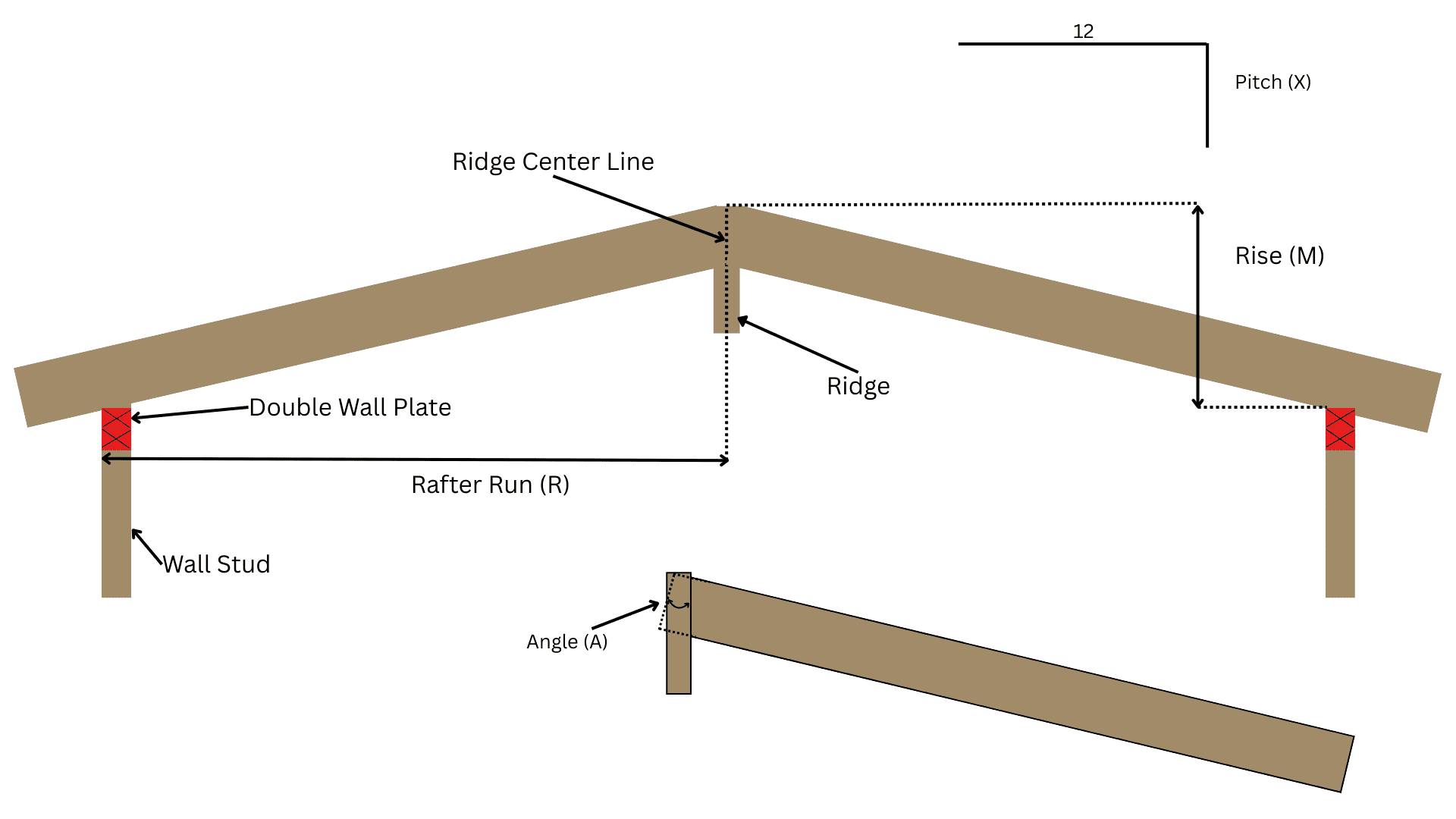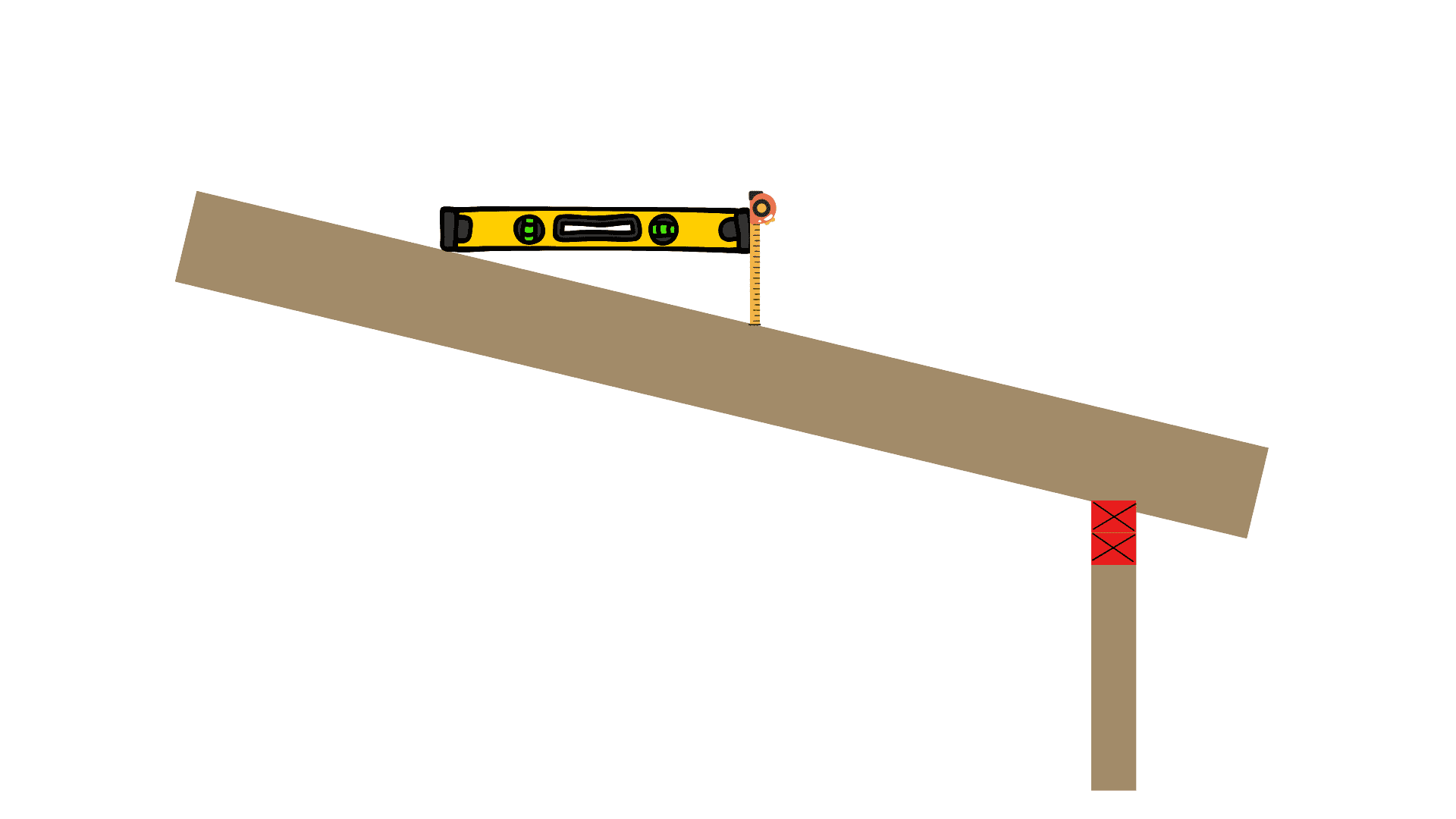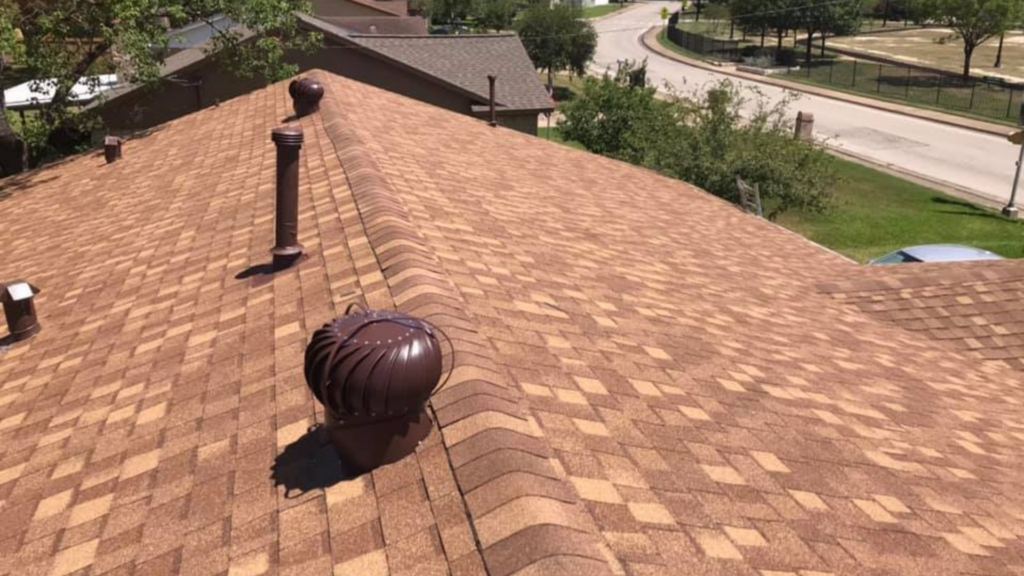Roof Pitch Calculator
Use our free roof pitch calculator to quickly determine your roof’s slope based on the rise and run. Knowing your roof pitch is essential for accurate material estimates, storm damage inspections, and insurance claims. Whether you’re planning a new build, replacing an old roof, or just gathering information, this tool helps you understand what you’re working with.
How to Calculate Roof Pitch
Measure the Rise – This is the vertical distance from the top of the wall to the roof peak.
Measure the Run – This is the horizontal distance from the edge of the roof to the center ridge line.
Enter those numbers into the calculator above.
If you’re not sure how to measure safely, request a free inspection and let our crew handle it.

Roof Pitch Calculator
Enter the rise and run measurements of your roof to calculate the pitch and angle.
Roof Pitch:
Roof Angle:
How to Measure Rise and Run:
Rise: Measure the vertical distance from the roof's surface at one point to the roof's surface directly above it. If you have access to the attic, you can measure the vertical distance from the top of the ceiling joist to the top of the rafter. Otherwise, you may need to measure from the outside of the building.
Run: Measure the horizontal distance corresponding to the rise measurement. This is the distance along a level plane between the two points where you measured the rise. It is important that the run measurement is directly horizontal.
Safety First: If you are not comfortable measuring your roof, please consult a professional roofer. Never climb on a roof that you do not feel comfortable measuring your roof.
Simplified Roof Pitch Calculation
There's an even easier way to determine roof pitch using a level. Here's how:
- Place one end of a level (e.g., a 2-foot level) flat against the roof surface.
- Raise the other end of the level until it's perfectly horizontal (level).
- Measure the vertical distance from the roof surface to the bottom edge of the level.
- Divide the measured distance by the length of the level you used (divide by 2 for a 2-foot level).
- The result is your roof pitch, commonly expressed as "rise on 12" (e.g., "4 on 12").

This method provides a quick and practical way to determine roof pitch, especially when direct rise and run measurements are challenging.
Roof pitch is represented as a ratio of rise over run, such as 4/12 or 6/12. This means that for every 12 inches of horizontal run, the roof rises 4 inches or 6 inches, respectively. While there are many different rise and run measurements that can result in the same pitch, some common pitches include:
| Pitch | Rise (Inches) | Run (Inches) |
|---|---|---|
| 4/12 | 4 | 12 |
| 6/12 | 6 | 12 |
| 8/12 | 8 | 12 |
| 12/12 | 12 | 12 |
Use our calculator above to determine the exact pitch of the roof you are working on.
What Is a Common Roof Pitch in Texas?
Most homes in Texas have a pitch between 4/12 and 6/12, but we’ve seen everything from flat roofs on modern builds to steep 10/12 pitches on custom homes. If you’re comparing roof quotes or trying to file an insurance claim, knowing your exact pitch can make a big difference in pricing and eligibility.
Check out this roof replacement case study to see how pitch affected labor and materials.
Any questions? We got you
What is a roof pitch?
The pitch describes the steepness of your roof. It’s expressed as “X-in-12,” meaning how many inches the roof rises for every 12 inches of run.
Why does roof pitch matter?
Pitch affects everything from roofing materials to drainage to whether insurance will cover repairs. Steep roofs often cost more due to safety and labor.
How accurate is this calculator?
This tool gives a close estimate based on measurements you provide. For the most accurate results, schedule a free on-site inspection.
What is a standard roof pitch?
he most common residential roof pitch is 4/12 or 6/12, but there’s no true standard. It depends on your home’s design and location.
Need Help With a Roofing Project?
If you’re using this calculator to get a sense of your roof’s slope, chances are you’re planning a repair, replacement, or inspection. We can help with all of that—and we’ll walk your roof to confirm the numbers, free of charge.


